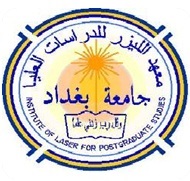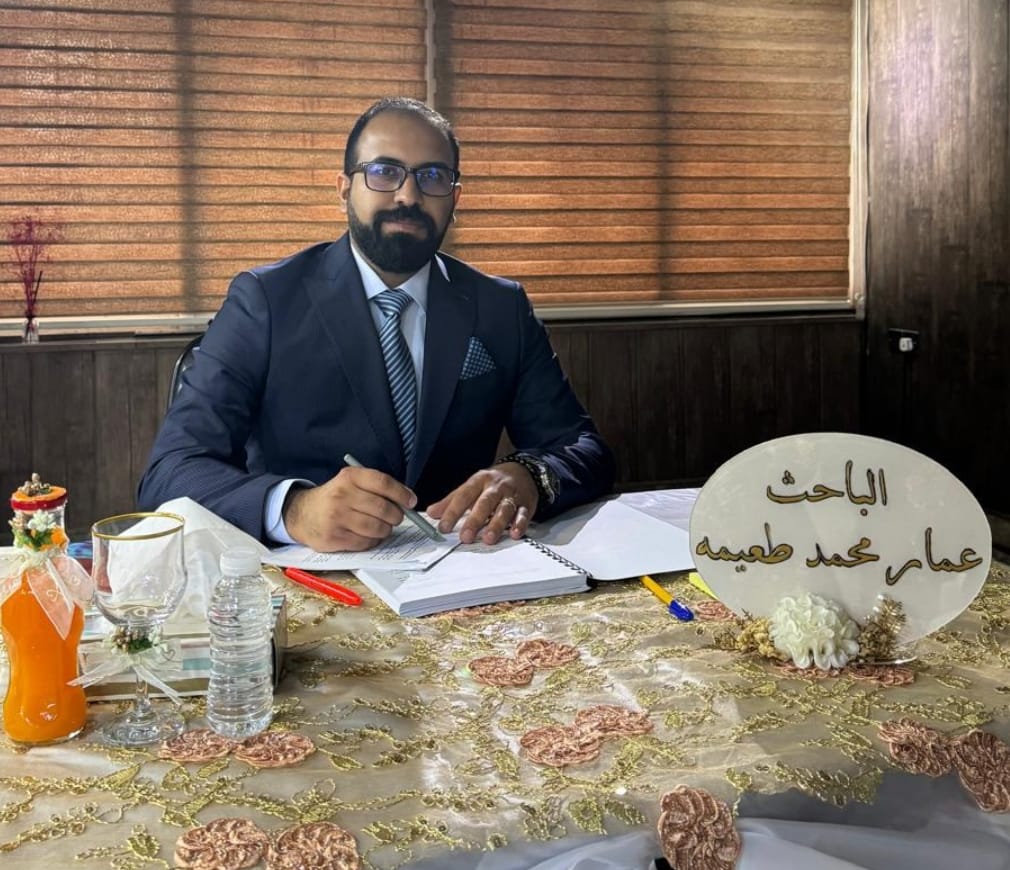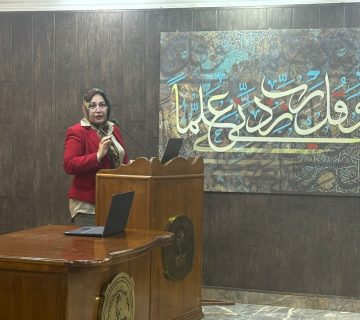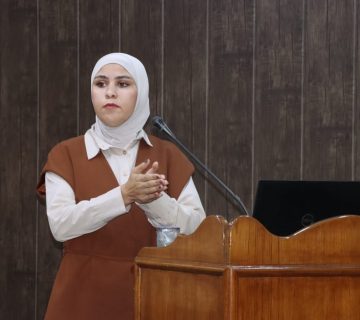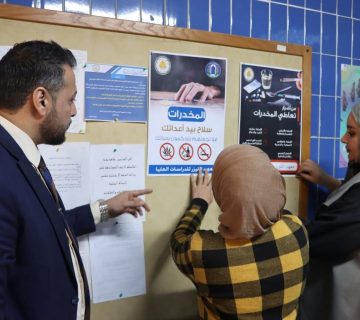A doctoral dissertation defense was held at the Laser Institute for Postgraduate Studies for the thesis titled:
“Designing Refractive Index Sensors Based on D-Shaped Photonic Crystal Fibers”
by the student Ammar Mohammed Tu’aimah, under the supervision of Assistant Professors Dr. Hanan Jaafar Taher and Dr. Shaimaa Riyadh Al-Tahan.
The dissertation aimed to design refractive index sensors, as photonic crystal fiber sensors are highly significant and efficient in the current era. The study proposed and examined three D-shaped photonic crystal fiber (PCF) biosensors based on the surface plasmon resonance (SPR) phenomenon. Using COMSOL Multiphysics (version 5.6) with the finite element method, these sensors were designed for refractive index detection. They operate through wavelength shifts in the near-infrared range of the electromagnetic spectrum.
To enhance their performance, gold nanoparticles were robustly bonded to the silica surface of fibers coated with titanium dioxide, improving the coupling between the core-guided modes and the surface plasmon polariton modes. This dissertation achieved a unique design with high reliability by addressing three main topics:
Gold-Coated D-Shaped PCF Sensor:
The proposed sensor featured a gold layer bonded to the silica surface using a titanium dioxide layer. It exhibited exceptional performance, including a maximum wavelength sensitivity of 17,500 nm/RIU in the detection range of 1.37–1.41 and a wavelength sensitivity of 12,500 nm/RIU. Additionally, it achieved a maximum amplitude sensitivity of 8,725.56 RIU⁻¹ and a resolution of 8 × 10⁻⁶ RIU using amplitude and wavelength techniques. These results demonstrated the best sensitivity and resolution reported so far for a PCF-SPR sensor.
Multi-Channel PCF-SPR Sensor:
A dual-channel PCF-SPR sensor was proposed for simultaneous digital detection of multiple analytes. In glucose concentrations ranging from 25% to 40%, the sensor achieved a maximum wavelength sensitivity of 29,162 nm/RIU and an amplitude sensitivity of 21,989.11 RIU⁻¹. The proposed sensor also achieved a value of 70,030.293 RIU⁻¹. In addition to multi-analyte detection, the sensor can be utilized for single-analyte detection, providing cost-effective and rapid results.
Cholesterol Biosensor:
A biosensor for cholesterol detection was designed based on sample solution sensitivity and concentration. The device, a three-channel PCF sensor, was positioned beneath the D-shaped section to facilitate simultaneous detection of different analyte samples. The PCF simulations showed a maximum wavelength sensitivity of 8,766.67 nm/RIU over the wavelength range (1.497, 1.512, 1.525, 1.551, 1.582). It also demonstrated remarkable performance metrics, including an amplitude sensitivity of 21,941 RIU⁻¹ and a resolution of 13.33 × 10⁻⁶ RIU, making it ideal for evaluating biomolecules, organic compounds, chemicals, and other fluids.
The positive results obtained across all tested analytes highlight the reliability and robustness of the sensor.


